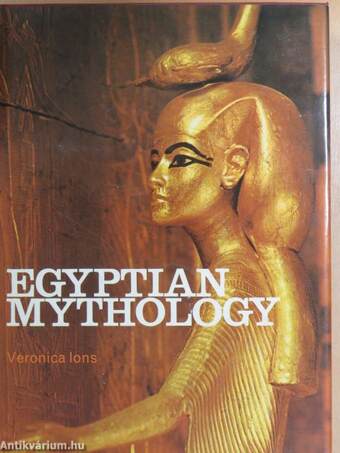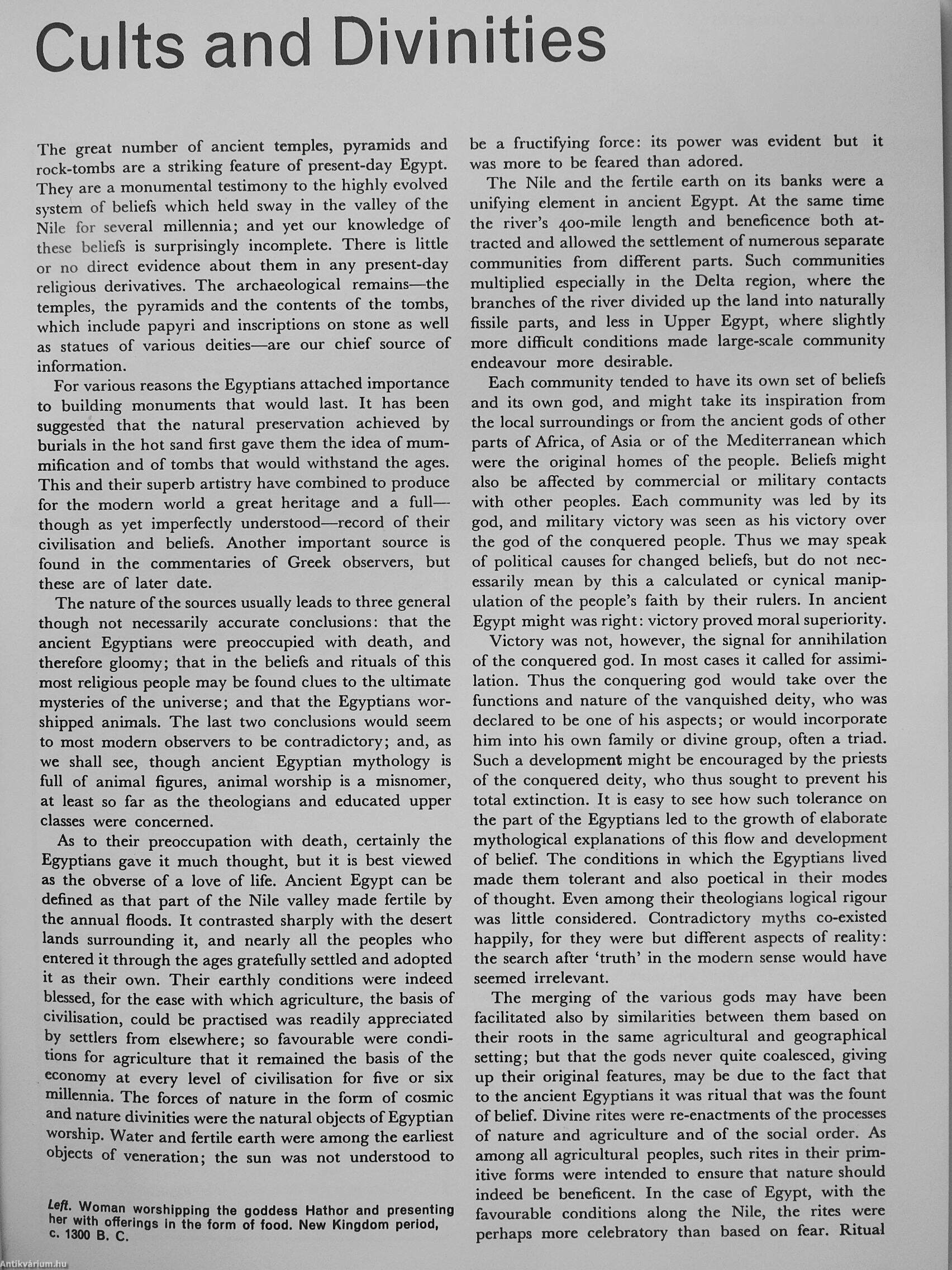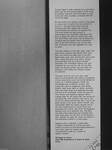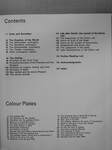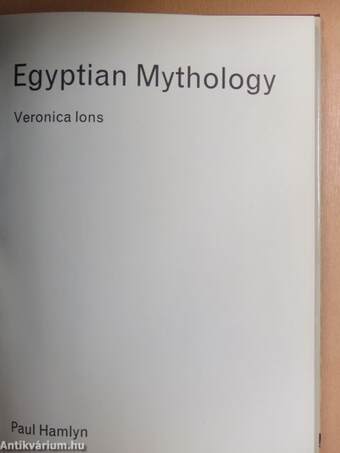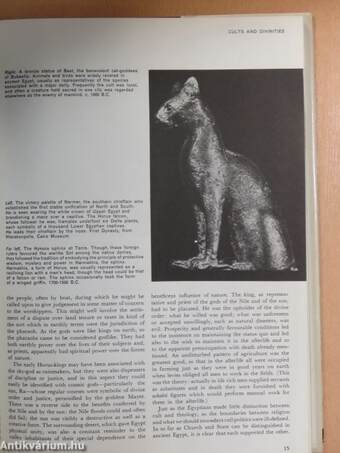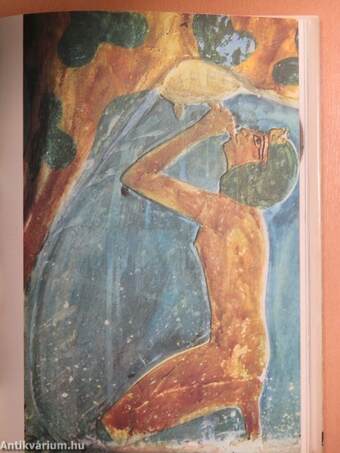1.063.261
kiadvánnyal nyújtjuk Magyarország legnagyobb antikvár könyv-kínálatát

VISSZA
A TETEJÉRE
JAVASLATOKÉszre-
vételek
Egyptian Mythology
| Kiadó: | Paul Hamlyn |
|---|---|
| Kiadás helye: | London |
| Kiadás éve: | |
| Kötés típusa: | Varrott keménykötés |
| Oldalszám: | 141 oldal |
| Sorozatcím: | |
| Kötetszám: | |
| Nyelv: | Angol |
| Méret: | 29 cm x 21 cm |
| ISBN: | 0-600-02356-6 |
| Megjegyzés: | Fekete-fehér és színes fotókkal. |
naponta értesítjük a beérkező friss
kiadványokról
naponta értesítjük a beérkező friss
kiadványokról
Előszó
TovábbFülszöveg
Ancient Egypt is often regarded as a !and where death was the chief preoccupation of the living. Its greatest treasures were discovered in royal tombs and were inevitably connected with the cult of the dead.
But the picture of a gloomy march to the grave is a false one. It results from the accident of survival — the royal tombs were built like fortresses and their spectacular contents overshadowed the evidence of everyday life. This book shows the truer picture: it demonstrates the remarkable diversity of the gods of Egypt and tells the stories that were told about them, and shows how profound and complete were the beliefs which covered the span of life of the ordinary man, no less than that of Pharaoh, who was regarded as a god on earth.
The early dwellers of the Nile valley made their gods of the creatures that affected their daily lives, and during the 4,000 years of ancient Egypt these gods were transformed. Some kept their original character while others, though still... Tovább
Fülszöveg
Ancient Egypt is often regarded as a !and where death was the chief preoccupation of the living. Its greatest treasures were discovered in royal tombs and were inevitably connected with the cult of the dead.
But the picture of a gloomy march to the grave is a false one. It results from the accident of survival — the royal tombs were built like fortresses and their spectacular contents overshadowed the evidence of everyday life. This book shows the truer picture: it demonstrates the remarkable diversity of the gods of Egypt and tells the stories that were told about them, and shows how profound and complete were the beliefs which covered the span of life of the ordinary man, no less than that of Pharaoh, who was regarded as a god on earth.
The early dwellers of the Nile valley made their gods of the creatures that affected their daily lives, and during the 4,000 years of ancient Egypt these gods were transformed. Some kept their original character while others, though still associated with the original concept, developed into formidable figures that also embraced the sun and the sky, the life after death, the life-giving Nile, and the needs and emotions which attend the different stages of existence,
The gods, and the men who were made gods, are all presented here. Hathor, the goddess of love, wearing the cow's horns that indicate her origins as a fertility goddess; Thoth, the ibis-headed god of wisdom; Anubis, who guides the souls to judgement, and whose jackal's head looks back to earlier centuries when the jackal might have despoiled the dead and had to be propitiated. There are also the more human and appealing figures; Osiris, brought down by his enemy Set; the loving and sorrowing Isis, wife of Osiris; and Horus, her divine son, whose conflict with Set is one of the great stories of the world. Osiris himself, who represented death and rebirth, became one of the most revered gods of ancient times and dominated the funeral rites which the Egyptians depicted with such elaborate care. The book also tells of the great kings and ministers who were made gods, and the story of the Pharaoh who rejected the gods he could not believe in and fashioned another in a new image.
Egyptian myth is depicted in great detail in Egypt's celebrated art, and this has been drawn on to add a rich and illuminating feature to a book which gives an original and comprehensive guide to a subject of ageless interest.
24 pages in colour. /
Over 100 Illustrations In black & white. / Index /
Vissza
Témakörök
- Idegennyelv > Idegennyelvű könyvek > Angol > Művészetek > Művészettörténet, általános
- Idegennyelv > Idegennyelvű könyvek > Angol > Irodalomtörténet
- Idegennyelv > Idegennyelvű könyvek > Angol > Művelődéstörténet
- Idegennyelv > Idegennyelvű könyvek > Angol > Néprajz
- Idegennyelv > Idegennyelvű könyvek > Angol > Történelem > Egyéb
- Művelődéstörténet > Civilizációtörténet > Afrikai
- Irodalomtörténet > Regék, mondák, folklór
- Néprajz > Folklór (szellemi néprajz) > Népköltészet > Monda, legenda
- Néprajz > Folklór (szellemi néprajz) > Népi kultúrák > Afrika
- Művészetek > Művészettörténet általános > Kontinensek művészete > Afrika
- Művészetek > Művészettörténet általános > Idegen nyelv > Angol
- Művészetek > Művészettörténet általános > Korszakok, stílusok > Ókor > Egyiptom
- Történelem > Legendák, mondák > Egyéb
- Történelem > Idegennyelvű > Angol
- Régészet > Általános régészet, antropológia > Ókor
- Régészet > Kontinensek szerint > Afrika > Egyiptom
- Történelem > Kontinensek szerint > Afrika, afrikai országok története
- Idegennyelv > Idegennyelvű könyvek > Angol > Régészet > Általános régészet, antropológia > Ókor
- Idegennyelv > Idegennyelvű könyvek > Angol > Régészet > Kontinensek szerint > Afrika
- Történelem > Ókor > Egyiptom
- Történelem > Régészet > Általános régészet, antropológia > Ókor
- Történelem > Régészet > Kontinensek szerint > Afrika
Veronica Ions
Veronica Ions műveinek az Antikvarium.hu-n kapható vagy előjegyezhető listáját itt tekintheti meg: Veronica Ions könyvek, művekMegvásárolható példányok
Nincs megvásárolható példány
A könyv összes megrendelhető példánya elfogyott. Ha kívánja, előjegyezheti a könyvet, és amint a könyv egy újabb példánya elérhető lesz, értesítjük.



